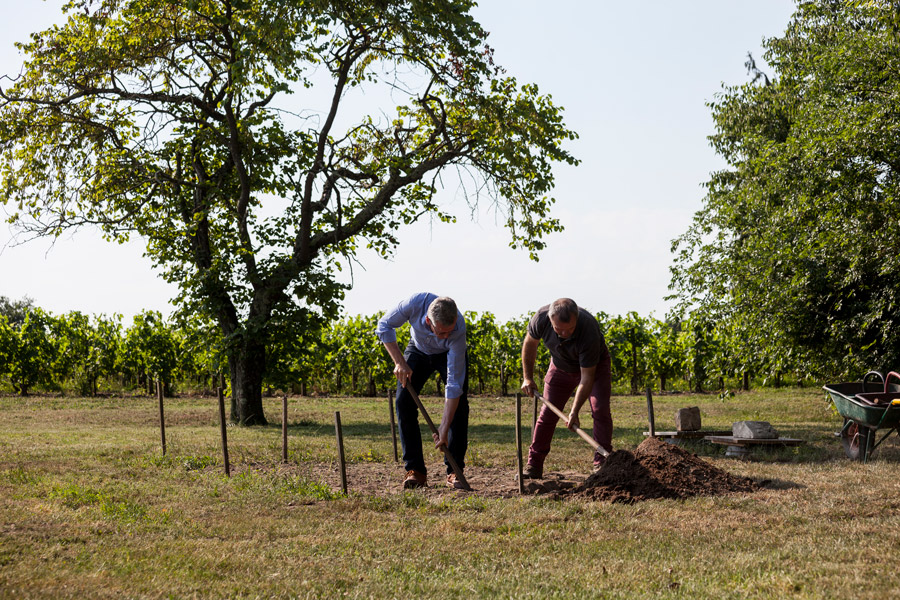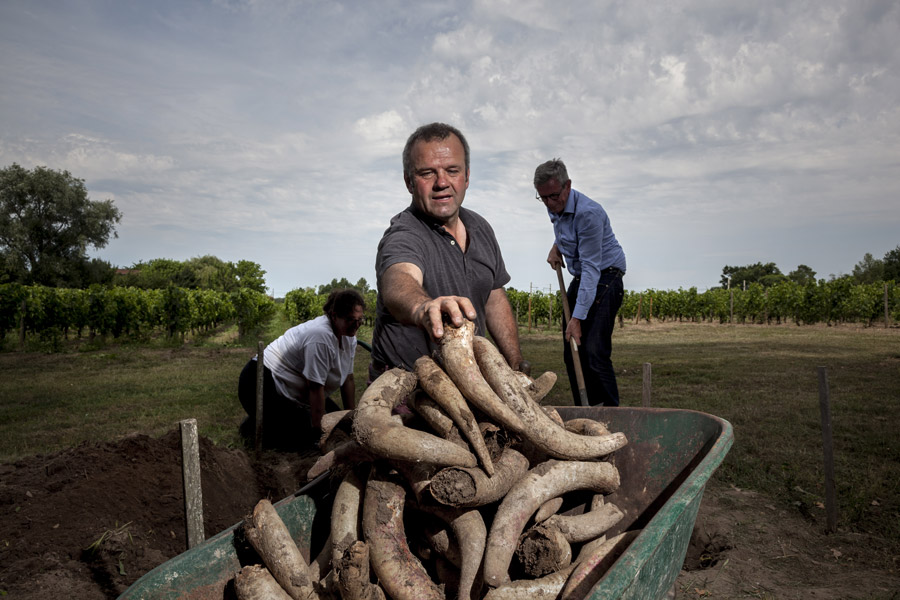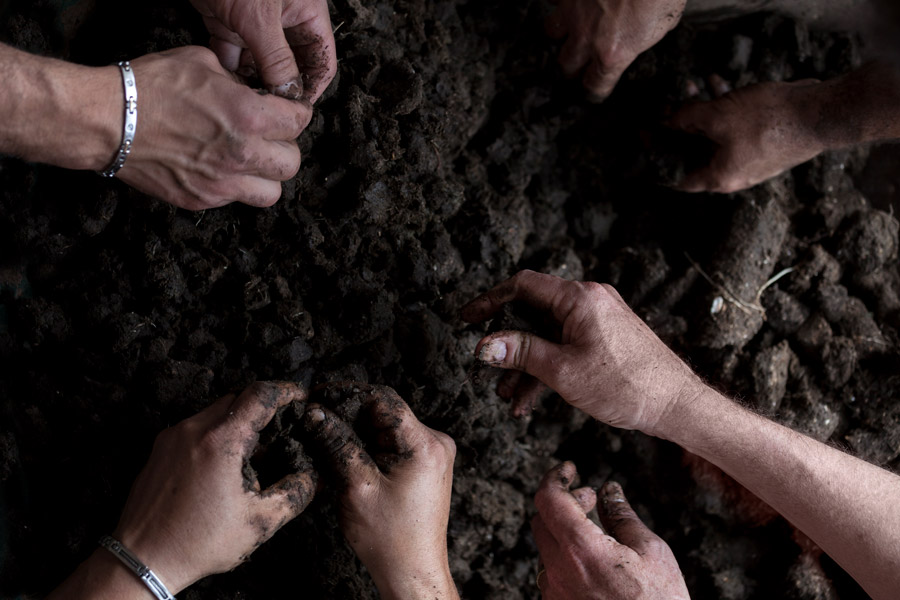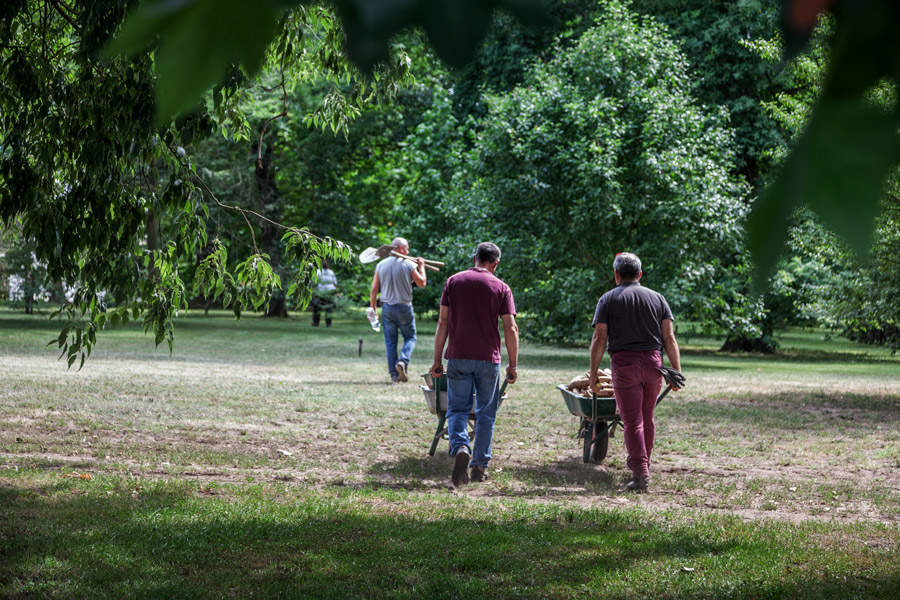
Terroir
FINE CLAYEY GRAVEL
CLAYEY SAND
GRAVELLY AND SANDY CLAY
Pomerol was created by the Isle river. Material was deposited during the Middle Pleistocene due to erosion of the Pyrenees and the Massif Central. There are three distinct zones within the Pomerol terroir. First there is the plateau, with higher levels of clay, then the start of the plateau edge where clay remains very present but is mixed with pebbles, and finally the series of terraces, created by erosion caused by the Isle to the west and south and by the Barbanne to the north. The Pomerol soils are rich in iron oxide deposits, known as ‘crasse de fer’. It is widely accepted that this is part of what gives Pomerol wines their typical style.
Château Mazeyres sits on terraces to the west and south of the Pomerol appellation. The vineyard is split into three distinct zones, each with different soils.
- Around the house in the western part of the appellation, there is fine clayey gravel falling somewhere between fine pebbles and rough sand. Sometimes the gravel is mixed with clay, and sometimes they form layers. In some cases the pebbles emerge at the surface and in others everything is covered with sand. This wide variety has a significant impact on wine profile and helps to create a consistency focusing on an upright, refined, chiselled and elegant style.
- The southern part of the appellation has clayey sand. The sand sits on clay, which can be black, white or multicoloured. The roots push through the sand to find water in the clay, which serves as a reservoir. Wines here are well-rounded and fleshy with beautiful density in the mid-palate.
- The third zone is further east at the foot of the plateau. It has gravelly and sandy clay, with higher levels of clay than in other parts of the vineyard. This clay is what gives the wines their power. These plots are used to create the backbone of Mazeyres wine blends.
All of these soils produce wines with a very particular touch. They reveal the velvety side that Merlot can offer in a setting such as this. Why does this velvetiness systematically appear in terroirs that are so different from each other? There are various views, but one line of thinking seems particularly interesting. The traditional school of thought is that it is simply down to mineral elements, soil structure, pebbles, rough, fine or very fine sand, alluvium, and clay. What about the soil’s organic dimension? The Saint-Emilion limestone plateau extends east to Castillon. Geologically, the Saint-Emilion and Castillon limestone plateaus are identical. However, Ausone and Bélair-Monange are in Saint-Emilion and not Castillon, and we have never got anywhere close to Ausone in Castillon. You might argue that it is a little further east, a little less maritime, and there are some subtle influences such as the microclimate, but this does not explain everything. Adopting a more holistic attitude could be of interest, particularly as regards the living element of micro-organisms. We know that effort to adapt causes a dual movement, from plant to soil and from soil to plant: in other words, the soil and the vine are engaged in a natural dialogue and are open to considerable mutual influences. It is plausible that this living, active soil offers up its contributions from all sides, and that from a mineral perspective, this organicity actively promotes typical style.





